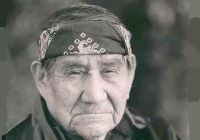CHALMERS DAY
(Hopi b. 1956 – present)
Chalmerswas born October 24, 1956 in Keams Canyon, Arizona. Chalmers was given the Hopi name Dap-Hong-Va, and was born to the Corn and Water Clans. He is the grandson of Robert Satala, Sr., one of the Hopi’s earliest silversmiths and a merchant on the First Mesa in Arizona.
Chalmers Daylearned his art from the Hopi master,Preston Monongye. As Dr. Gregory Schaaf in his book,American Indian Jewelry Artist Biographiesstates: “Chalmers specializes in very detailed and sophisticated designs in the overlay technique. The quality of his artistry is exceptional. His compositions combine village scenes, cornfields, kachinas and more in a single piece…. His jewelry takes one on a journey into the Hopi world. His designs portray the life of the Hopi, their migrations, ceremonies and spiritual figures. He is recognized as one of the greatest overlay jewelers in history.”
In 1976, Chalmers participated in one of Preston’s jewelry classes. Preston continued to advise Chalmers in his jewelry craft.
Like the Navajo Nation, the Hopi Indians were the benefactors of the Spaniards’ silversmith tradition. While the two nations’ influences are evident in the art of the other, Hopi jewelry artists sought to distinguish themselves from other Southwestern Indian jewelry artists.
Beginning just before WWII, Hopi Indian jewelry artists have developed a characteristic style, one that uses few stones but intricate overlay design work. Today Chalmers Day is the most well-known Hopi jewelry artists. Day has been creating jewelry since 1972.
The sterling silver overlay characteristic of Hopi jewelry requires two pieces of silver. Designs are cut into one piece, which is overlaid and soldered to another solid piece. This gives Hopi Indian jewelry depth, which is sometimes accentuated by the use of an oxidized or textured silver base. The brushed or polished overlay stands in brighter contrast to the darker background.
Hopi Indian jewelry relies heavily upon traditional symbols and designs, including: cornstalks, bear claws, rain, clouds, man in the maze, sunfaces, kokopellis, and village scenes. The intricacy of the overlay patterns in the small space such as earrings and pendants, in particular, is truly amazing and speaks to the talent of the Hopi Indian jewelry artists.
AWARDS:
…Indian Market, Santa Fe, New Mexico (annually since 1983)
…Jewels of the Southwest, Museum of Indian Arts & Culture, Santa Fe, New Mexico
PUBLICATIONS:
…American Indian Jewelry: 1200 Artist biographies Gregory Schaaf
…Southwest Art Magazine













